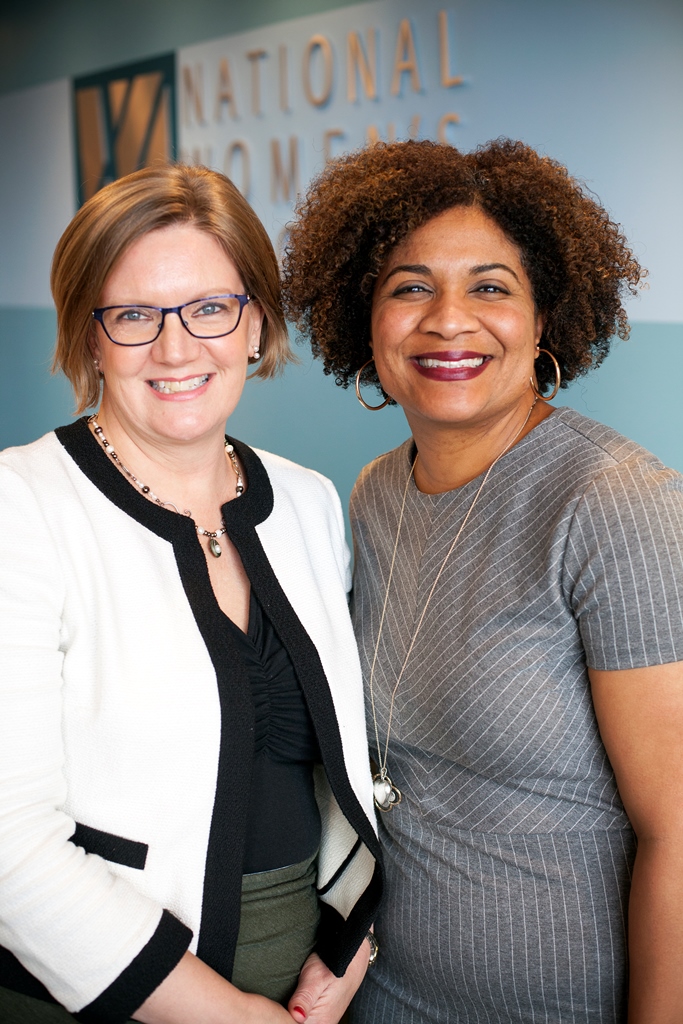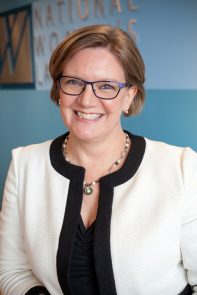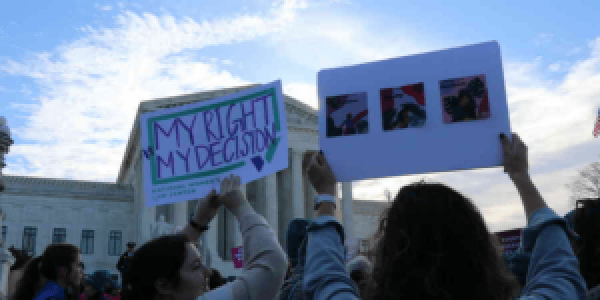Abortion rights, women of color, and LGBTQI+ people are under attack. Pledge to join us in fighting for gender justice.
Managing for the Resistance: A Q&A With Nancy Withbroe, the National Women’s Law Center’s New COO and Chief of Staff

 Since Donald Trump was elected President, our country has seen a revolution of resistance. As part of this movement that has been both celebrated and justly criticized, the National Women’s Law Center (NWLC) is striving to be more intentional, intersectional, and self-reflective about its participation and leadership. In particular, NWLC is working harder to center women of color who are most affected by the Trump Administration’s agenda. This November, one year after the election, we were extremely excited to welcome Nancy Withbroe back to NWLC as our very first Chief Operating Officer and Chief of Staff. She will be leading a lot of this internal work, and we recently sat down with her to discuss how her new role would shape NWLC from the inside out.
Since Donald Trump was elected President, our country has seen a revolution of resistance. As part of this movement that has been both celebrated and justly criticized, the National Women’s Law Center (NWLC) is striving to be more intentional, intersectional, and self-reflective about its participation and leadership. In particular, NWLC is working harder to center women of color who are most affected by the Trump Administration’s agenda. This November, one year after the election, we were extremely excited to welcome Nancy Withbroe back to NWLC as our very first Chief Operating Officer and Chief of Staff. She will be leading a lot of this internal work, and we recently sat down with her to discuss how her new role would shape NWLC from the inside out.
Q1: You are the very first Chief Operating Officer and Chief of Staff at the National Women’s Law Center. What does that mean to you? What are your goals for the position?
I’m thrilled to be part of this moment at the National Women’s Law Center while we transition from being led by our amazing Co-Founders, Marcia Greenberger and Nancy Duff Campbell, to our next phase.
I am a key thought partner to Fatima and the rest of our senior team, providing strong day-to-day leadership for our staff and ensuring that the Center is consistently managed with excellence. My goals include ensuring the staff aligns with the goals in our strategic plan, facilitating more integrated work, and nurturing leadership in every staff member. We are growing, thanks to the generosity of donors who recognize the powerful role the Center plays. So, I’m also leading efforts to shape a number of new roles, to recruit top talent, and to integrate those colleagues into the incredible staff already in place.
A number of other national advocacy organizations –AAUW, the Advancement Project, the Center for Reproductive Rights, Equal Justice Works, and the Leadership Conference on Civil Rights – have recently established similar executive roles that focus on organizational strategy and effectiveness, change management, and innovation. I look forward to connecting with leaders in those roles to see how, collectively, we can advance social justice through building even more robust and effective nonprofit institutions.
Q2: This isn’t your first time working at the National Women’s Law Center. Can you tell us a little bit about your former position and what brought you back?
From 2013 to 2016, I was the Center’s Vice President for Development and Strategy. I’m proud that during this period we made significant progress in diversifying our contributed revenue, in engaging our donors more deeply, and in strengthening the systems that support fundraising. I also worked with the Board as we transitioned to a new Chair, Jane Sherburne, and partnered with Jane in guiding the Center through a comprehensive strategic planning process. That plan affirms the Center’s long-standing multi-issue agenda and articulates an intersectional approach, as well deeper partnerships with state leaders, a multi-faceted issue campaign, and internal work on organizational effectiveness.
This is a particularly important time in our nation to be led by Black women, and I can’t imagine a more powerful, inspiring, and brilliant Black woman than Fatima for and with whom to work. I did a lot of reflecting after the Presidential election about what work I’m called to do, and found that I yearned for an opportunity to bring all of my skills, talents, and passions to fight for social justice and especially to support the leadership of Black women. Fatima’s invitation to join her in leading implementation of the bold, intersectional vision articulated in the strategic plan that I had helped to develop – which is more important than ever in these challenging times for our nation – proved to be exactly the opportunity I was looking for.
Q3: What aspects of life inform your feminism?
I was born in April 1968, between the assassinations of Rev. Dr. Martin Luther King, Jr. and Bobby Kennedy. It was a violent, troubling time when power was shifting in our nation, with change led by African Americans, by women, and by young people. My earliest memories include listening to protest songs by Peter, Paul and Mary and other activist artists, learning the stories passed on by the fierce women in my extended family, being taken along to both my parents’ many volunteer activities, and witnessing my mom’s struggles to push for inclusive language and other feminist practices in our church.
Those experiences – activism through the arts, deep commitment to family and community, and feminist and liberation theology frameworks and practices – continue to inform my feminism today. I’ve decorated my office with art by women and portraits of several generations of women in my family whose hard work and determination inspire me. I serve on the Board of ProInspire, a nonprofit that focuses on developing leaders for the social sector and that centers racial equity. Being an active donor to a range of causes helps me seize the opportunity to disrupt the power dynamics in our sector through my own philanthropy. I’m a lay leader at my church, First Congregational United Church of Christ, which was founded by abolitionists in 1965 as the first racially integrated church in D.C. and through which I’ve had the opportunity to do intense anti-racism work, including training on white privilege.
My husband Paul Smolinsky and I have two young adult sons; one works for Google in NYC as a software engineer and the other is a sophomore at a small school in Vermont where he studies history and volunteers as an EMT. We’re proud that they are both fierce feminists and finding their own ways to make our world more just and humane.
Q4: What activities outside of work replenish you so that you’re able to continue to be a part of the resistance?
I am an avid reader, primarily of literary fiction, and a movie fan, and find that in this moment I especially need to lose myself in rich stories recommended by the women in my book group, all of whom are nonprofit leaders. Recent favorites include Hillary Jordan’s Mudbound (which is much better than the excellent movie – but isn’t that always true?!) and William Boyd’s Sweet Caress, and woman-centered series such as Big Little Lies and Orange Is the New Black. I’m a classically-trained soprano and my greatest joy is singing with my church’s choir. I’m also re-learning how to play the piano after a 25-year hiatus. Paul does all the cooking in our household, but I enjoy baking and find that the simple pleasure of working with my hands to roll out pie dough or shape cookies calms me. Mindful of the importance of self-care for all of us called to do the heroic work of the resistance, I also try to exercise often, get lots of sleep, and regularly visit the yoga and massage practitioners in Takoma Park.
Q5: Last question (and most important) – If you could have one superpower to use as part of the resistance, what would it be and why?
I wish I could time travel to meet women from centuries past, especially those from marginalized communities whose stories have been lost or misappropriated. Those women found strength and resilience in the face of extreme oppression and discrimination, and today’s resistance could learn so much from them. A friend introduced me to the work of singer-songwritter and MacArthur Genius Rhiannon Giddens, who has written songs based on narratives by African Americans enslaved during the Civil War. I yearn to meet the women in her songs and am grateful to her for lifting up these voices.

